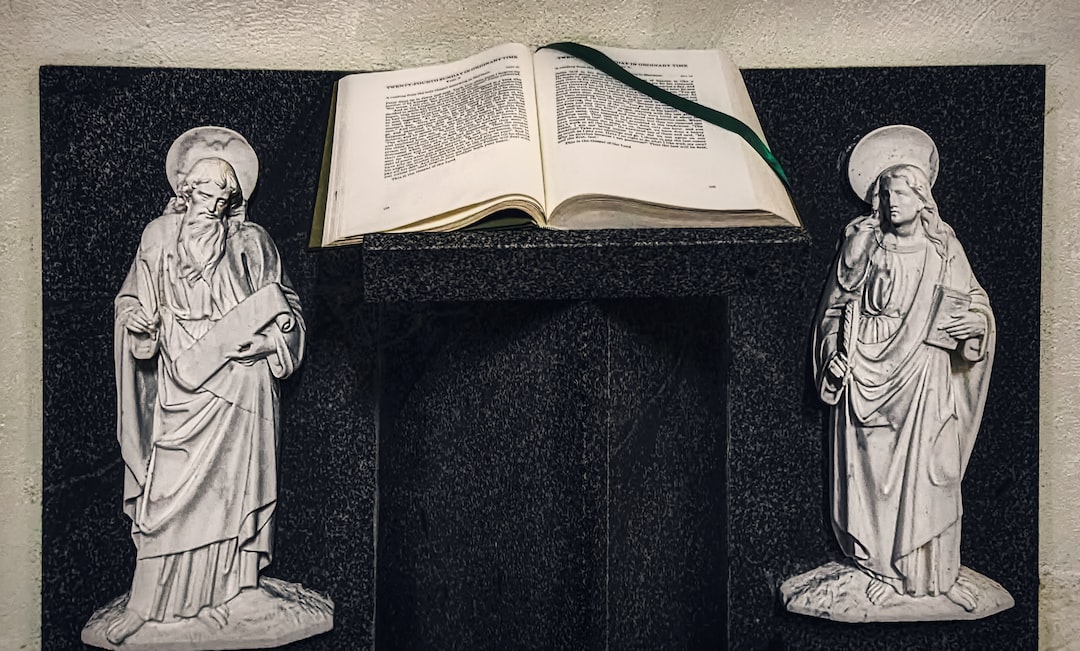The Influence of Religion on Art, Music, and Literature
Religion has always played a significant role in shaping human civilization. It has influenced various aspects of our lives, including art, music, and literature. Throughout history, these creative forms have been deeply intertwined with religious beliefs and practices, reflecting the deep spiritual and cultural dimensions of different societies. This blog post will explore the profound influence of religion on art, music, and literature, examining examples from different time periods and cultures.
Art is often seen as a spiritual expression, with many artists drawing inspiration from religious themes. In ancient times, religions such as ancient Egyptian, Greek, and Roman polytheism heavily influenced the art of these societies. Scultpures, paintings, and architectural structures celebrated various deities and mythological stories. These artworks not only conveyed the spiritual beliefs but also immortalized the gods and goddesses, serving as tools for worship and an attempt to comprehend the divine.
One of the prime examples of religious art can be found in the Middle Ages, specifically in the form of Christian art. In this period, the Church was a powerful institution, dictating the lives of people, and their worldview was primarily shaped by Christian teachings. Artworks such as frescoes and stained glass windows adorned the churches, depicting scenes from the Bible and narratives of saints. Artists sought to edify and teach through visual means, aiming to inspire devotion and piety among the masses.
Similarly, music has served as a powerful medium to express religious ideas and emotions. Hymns, chants, and religious songs have been composed in various cultures, carrying prayers, rituals, and stories of faith. One striking example is Gregorian chant, which developed during the medieval period and became an essential part of Christian liturgy. These monophonic melodies, characterized by their hauntingly beautiful nature, created an atmosphere of reverence and reflection, inviting worshippers to connect with the divine.
Religion not only influenced the creation of music but also shaped its content. Numerous classical composers, such as Johann Sebastian Bach, Wolfgang Amadeus Mozart, and Ludwig van Beethoven, were deeply religious. Their compositions often included religious themes and were performed in churches as acts of worship. Requiem masses, oratorios, and cantatas are just a few examples of musical genres that were intricately linked to religious practices.
Literature, too, has been significantly impacted by religion throughout history. Sacred texts like the Bible, the Quran, and the Vedas have provided inspiration for countless literary works. These religious scriptures have influenced the themes, characters, and moral lessons found in different forms of literature. From ancient epics like the Iliad and the Odyssey to modern classics like Dante’s Divine Comedy and John Milton’s Paradise Lost, religious motifs and allegories can be found in abundance.
Moreover, religious literature like sermons, hymns, and philosophical writings have played a crucial role in shaping cultural and intellectual history. The works of religious thinkers such as Saint Augustine and Thomas Aquinas still resonate today, influencing the thoughts and beliefs of millions of people worldwide.
In recent times, religion continues to leave its mark on art, music, and literature. Artists, musicians, and writers continue to explore religious themes, not only as a means of personal expression but also as a way to engage with society. Issues of faith, spirituality, and morality are often at the forefront in contemporary works, reflecting the ongoing influence of religion on human consciousness.
In conclusion, religion has exerted a profound influence on art, music, and literature throughout history. From ancient civilizations to the present day, religious beliefs and practices have shaped cultural expressions in various forms. Artworks, musical compositions, and literary works have served as powerful vehicles for religious ideas, emotions, and aspirations. By examining the interplay between religion and creativity, we gain a deeper understanding of our shared human experience and the enduring power of spiritual narratives.

